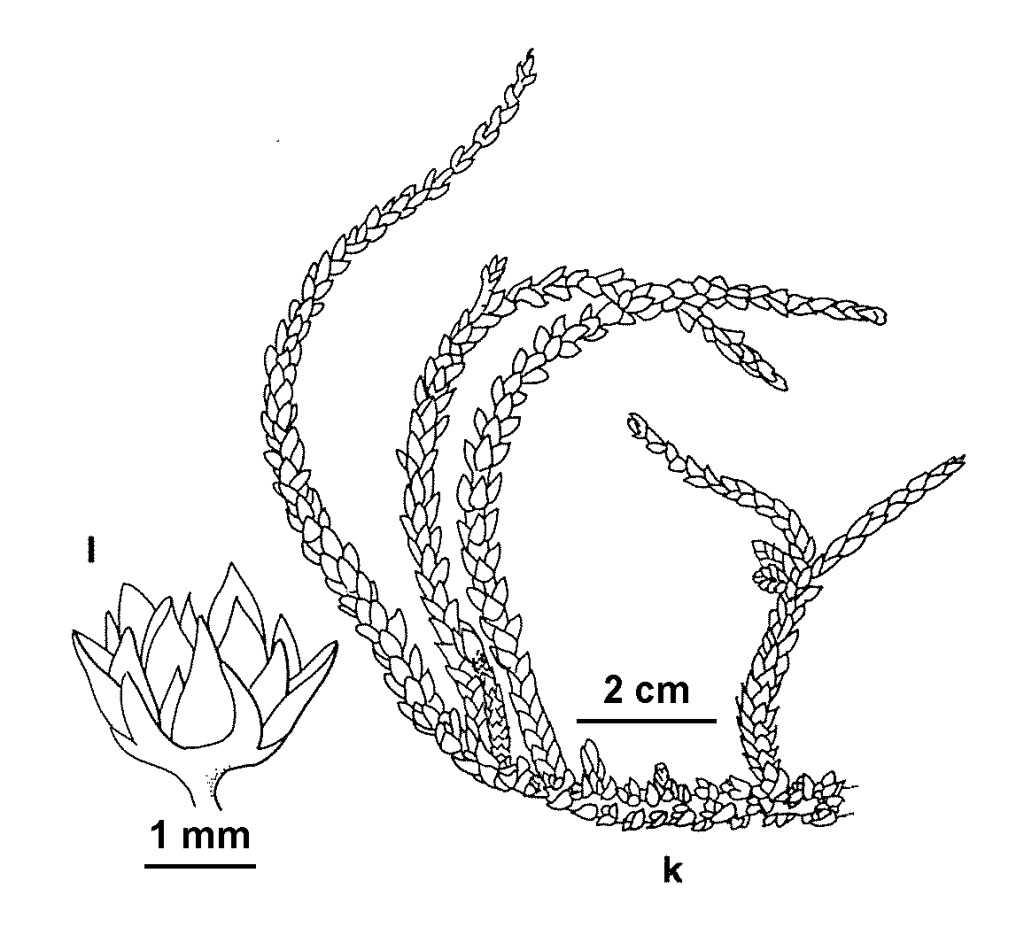Crassula muscosa var. muscosa
Clubmoss CrassulaPerennials with one to several woody stems to c. 50 cm, more or less branched. Leaves ovate to lanceolate, 2.5–3.2 mm long, 1.7–2.4 mm wide, obtuse or acute, dorsiventrally compressed, imbricate, hardly succulent. Inflorescence an elongate thyrse with sessile cymules in axils of leaf-like bracts, terminal or subterminal to all the major branches. Flowers 5-merous; calyx-lobes lanceolate, 0.5–0.6 mm long, acute; corolla yellowish-green, lobes lanceolate, 1.18–1.25 mm long, bluntly acute; nectary scales cuneate, 0.15–0.2 mm long, 0.12–0.2 mm wide; carpels almost conical, with 2 ovules. Follicles smooth, releasing seeds through apical pore; seeds not seen. Flowers virtually any time of year depending upon rain.
VVP, GipP. Native to southern Africa. Naturalized at several sites near Bacchus Marsh, and Studley Park (Kew, suburb of Melbourne). Most populations originate from nearby gardens or from dumped garden refuse.
The synonym, C. lycopodioides, refers to the superficial resemblance to clubmosses of this species.
Toelken, H.R.; Jeanes, J.A.; Stajsic, V. (1996). Crassulaceae. In: Walsh, N.G.; Entwisle, T.J., Flora of Victoria Vol. 3, Dicotyledons Winteraceae to Myrtaceae, pp. 542–555. Inkata Press, Melbourne.
 Spinning
Spinning
